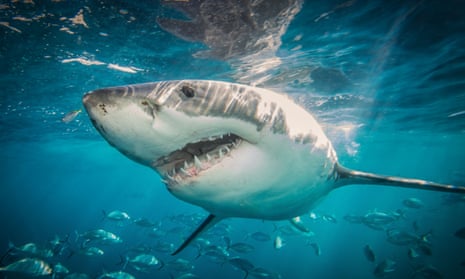Looking at the number of shark attacks over time can be alarming as the total number of attacks has clearly risen in recent years.
Here’s the number of attacks in Australia since 1900, recorded in the global shark attack file (and in some of these cases, the shark attack database records shark encounters that don’t result in injuries):
However, when adjusted to take into account the growing population, the trend is much less severe in historical terms, with only a small increase since the 1980s:
Many estimates of shark attack risk reported in the media stop here, looking at the total number of shark attacks as a proportion of the total population (and often comparing it to things such as being struck by lightning, falling off a ladder, and so on). And it’s worth remembering that no amount of analysis pointing out the rarity of an event lessens the tragedy and trauma for those involved in attacks.
But again, adjusting only by the total population still does not get close to the real risk of being attacked by a shark. If you spend your entire life on dry land, your chances of being attacked by a shark are precisely zero, assuming no aquarium mishaps or errant sharknados.
What we really need to do is adjust the number of shark attacks by the number of people who are actually around coastal waterways – the number of surfers, ocean swimmers, snorkelers, and so on.
There are at least two surveys that cover these activities, the Participation in Sport and Physical Recreation survey, run by the ABS, and the National Coastal Safety Report, published by Surf Life Saving Australia and conducted by Newspoll.
Both reports vary wildly in their estimates of people participating in each activity, so I’m going to use the ABS survey which, although it doesn’t survey beachgoers specifically, has a higher sample size and far less year-to-year variation.
Adjusted by the number of people participating in each activity shows the rate of shark attack per person is still quite small, but higher than the previous rate covering the entire population:
The adjusted rate also ranks diving and snorkelling higher than surfing, whereas surfing generally accounts for the highest number of shark attacks in total. And these figures would be still lower again if only looking at fatal attacks.
The risk might also vary further with location, as certain areas have higher numbers of shark attacks than others.
One study that looked at the risk of shark bites in Western Australia found the estimated risk varied considerably with region and activity. “Metropolitan Perth beach summer/autumn bathing less than 25m from shore in water less than 5m deep” was estimated as at least 50 times safer than cycling (based on the risk of a serious or fatal cycle crash), whereas “offshore diving and surf sports off Perth, during winter/spring” had a similar risk to cycling.
So, given all of this, if you swim infrequently the chances of being attacked by a shark are higher than you might have thought but still miniscule. If you’re a surfer, the chances are slightly higher again – but a shark attack is still a rare occurrence.

Comments (…)
Sign in or create your Guardian account to join the discussion